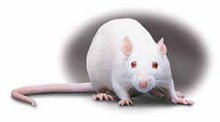For the last of my Black History Month tributes to African-American Scientists, I spotlight Dr. Daniel Hale Williams, a pioneer in turn-of-the-century surgery and sterile procedure, founder of early African-American and integrated hospitals, and instructor of medicine.
A good bio from which much of this was taken:
http://www.blackinventor.com/pages/danielwilliams.html
 Williams was born to a mixed-race family in Hollidaysburg, Pennsylvania, January 18, 1856, the fifth of seven children. His father, also named Daniel Williams, a white man, was an active abolitionist. Daniel's mother was a free Black woman, Sarah Price Williams. Daniel's father was a barber and moved the family to Annapolis, Maryland but died shortly thereafter of tuberculosis, when Daniel was 11.
Williams was born to a mixed-race family in Hollidaysburg, Pennsylvania, January 18, 1856, the fifth of seven children. His father, also named Daniel Williams, a white man, was an active abolitionist. Daniel's mother was a free Black woman, Sarah Price Williams. Daniel's father was a barber and moved the family to Annapolis, Maryland but died shortly thereafter of tuberculosis, when Daniel was 11.
Although some members of the family lived as whites, and he could also have done so, Daniel refused to "pass" and actively identified himself as Black. Soon after his father died his mother sent her children to live with different relatives, except Daniel, who was apprenticed to a shoemaker in Baltimore, while she went to live in Illinois. After a while Daniel left his apprenticeship and followed her, but although the reunion was happy, his mother soon moved to Maryland with his sisters to rejoin the other children, and Daniel elected to stay in Illinois.
For the next several years he worked and lived with various cousins, but when he was 16 he struck out on his own and moved to Wisconsin, where he became a barber, living very happily with his employer's family, and also attended high school. His employer-cum foster father later financed his medical training at Northwestern University Medical School (known at the time as the Chicago Medical College). Initially, Williams was apprenticed to a well-known Civil War surgeon for the Union, Dr. Henry Palmer. Williams graduated in 1883.
Because of primitive social and medical circumstances existing in that era, much of Williams early medical practice called for him to treat patients in their homes, including conducting occasional surgeries on kitchen tables. In doing so, Williams utilized many of the emerging antiseptic, sterilization procedures of the day and thereby gained a reputation for professionalism. He was soon appointed as a surgeon on the staff of the South Side Dispensary and then a clinical instructor in anatomy at Northwestern. In 1889 he was appointed to the Illinois State Board of Health and one year later set for to create an interracial hospital.
On January 23, 1891 Daniel Hale Williams established the Provident Hospital and Training School Association, a three story building which held 12 beds and served members of the community as a whole. The school also served to train Black nurses and utilized doctors of all races. The hospital's success rate was phenomenal considering the financial and health conditions of the patient, and primitive conditions of most hospitals. Much can be attributed to Williams insistence on the highest standards concerning procedures and sanitary conditions.
Williams is perhaps best known for a surgery he performed at Provident Hospital in 1893. Internal surgery was almost unheard of at the time due to the high risk of infection. When a man came in who had been stabbed in the chest, Williams took the initiative to open the chest and perform surgery, suturing a cut through the pericardium (sac around the heart), then applying antiseptic procedures before closing. Cured, the patient walked out of the hospital 51 days later and lived another fifty years. Technically this isn't an open heart surgery, and similar surgeries had been performed in Europe on at least a couple occasions over the hundred years prior, yet Williams is often credited with "the first open heart surgery."
In February 1894, Daniel Hale Williams was appointed as Chief Surgeon at the Freedmen's Hospital in Washington, D.C. and reorganized the hospital, creating seven medical and surgical departments, setting up pathological and bacteriological units, establishing a biracial staff of highly qualified doctors and nurses and established an internship program. Recognition of his efforts and their success came when doctors from all over the country traveled to Washington to view the hospital and to sit in on surgery performed there. Almost immediately there was an astounding increase in efficiency as well as a decrease in patient deaths.
During this time, Williams married Alice Johnson and the couple soon moved to Chicago after Daniel resigned from the Freedmen's hospital. He resumed his position as Chief Surgeon at Provident Hospital (which could now accommodate 65 patients) as well as for nearby Mercy Hospital and St. Luke's Hospital, an exclusive hospital for wealthy White patients. He was also asked to travel across the country to attend to important patients or to oversee certain procedures.
When the American Medical Association refused to accept Black members, Williams helped to set up and served as Vice-President of the National Medical Association. In 1912, Williams was appointed associate attending surgeon at St. Luke's and worked there until his retirement from the practice of medicine.
Upon his retirement, Daniel Hale Williams had bestowed upon him numerous honors and awards. He received honorary degrees from Howard and Wilberforce Universities, was named a charter member of the American College of Surgeons and was a member of the Chicago Surgical Society.
Williams died from a stroke on August 4, 1931, in Idlewild, Michigan, having set standards and examples for surgeons, both Black and White, for years to come.








